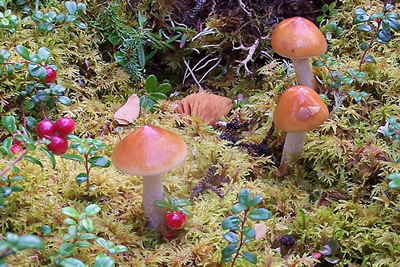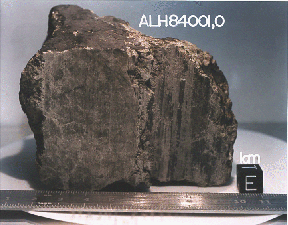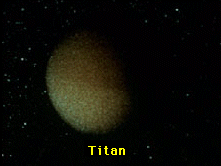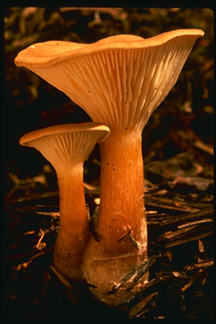Lactarius deliciosus
Click on image for full size
Corel Photography
Kingdom Fungi
Though the appearance of many fungi may resemble
plants, they are
probably more closely related to
animals.
Fungi are not capable of
performing photosynthesis, so must get their nourishment from other sources. Many fungi absorb nutrients directly from t
he soil. Many others feed on dead and decaying organisms and therefore have an important role in the recycling of nutrients in natural systems. Still others feed on living organisms. Athlete's foot is a common fungus which feeds on a living host - you!
When you think of fungi, you probably think of the mushrooms we can buy at the supermarket or hunt for in the woods. However, those "mushrooms" are really just special structures called "fruiting bodies" produced by the fungus for reproduction. The rest
of the fungus (and the biggest part) lives below the ground.
Fungi come in a wide variety of sizes and forms, and many have great economic importance. Tiny, one-celled yeasts are important for baking breads and fermenting wines, beers and vinegars. Many medicines are produced with the help of fungi, most notably,
the antibiotic, Penicillin. If you leave your bread on the counter too long, you'll be able to observe a relative of the Penicillium mold for yourself!
You might also be interested in:

Kingdom Plantae contains almost 300,000 different species of plants. It is not the largest kingdom, but it is a very important one! In the process known as "photosynthesis", plants use the energy of the
...more
A group of scientists is trying to learn more about how forests cycle carbon so they can more accurately predict climate change and global warming. To do this, they conducted a study in a northern forest
...more
Jupiter's atmospheric environment is one of strong gravity, high pressure, strong winds, from 225 miles per hour to 1000 miles per hour, and cold temperatures of -270 degrees to +32 degrees (freezing temperature).
...more
In July, 1996, it was announced that Dr. David McKay, along with a team of scientists at Johnson Space Center (a division of NASA), had discovered possible fossils of bacteria in a meteorite named ALH84
...more
Saturn's atmospheric environment is one of strong gravity, high pressure, strong winds, from 225 miles per hour to 1000 miles per hour, and cold temperatures of -270 degrees to +80 degrees. With winds
...more
Titan's atmosphere is a lot like the Earth's, except that it is very cold, from -330 degrees to -290 degrees! Like the Earth, there is a lot of Nitrogen and other complex molecules. There also may be an
...more
Autotrophs are organisms that can "make their own food" from an inorganic source of carbon (carbon dioxide) given a source of energy. Most autotrophs use sunlight in the process of photosynthesis to make
...more















